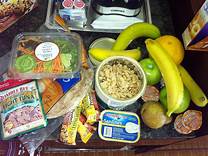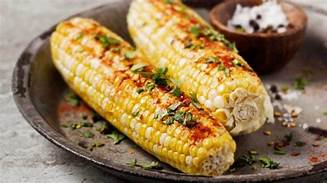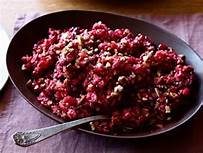Importance of well balance diet
All food contains all of the nutrients we need to be healthy, it is necessary to eat various foods in sufficient amounts. A good diet will include many different foods, and sufficient in quantity and quality to meet an individual’s need for food energy and other micro nutrients.
BEEF AND VEAL
Typical serving size:
3 oz (85 g)HOW THEY HARM
WHAT THEY HEAL
BEEF AND VEAL FACTS
5 g or less of saturated fat, and less than 95 mg of cholesterol per 100 g
Extra lean beef has less than half that amount of fat and saturated fat
Beef and veal aren’t the heart attack–causing culprits they have been made out to be
Many cuts are 20% leaner than they were 14 years ago—great news if you want to indulge in a steak or beef stew every now and again
Beef and veal are excellent sources of high quality protein, as well as vitamin B12, selenium, vitamin B6, and zinc
It’s also a good source of iron, phosphorus, and potassium, and contains some vitamin D
Health Benefits
Helps prevent anemiaBeef and veal are good sources of iron, which your body uses to carry oxygen in the blood
Many teenage girls and women in their child bearing years have iron-deficiency anemia
Aids weight loss
The protein in beef and veal can keep hunger at bay by reducing the impact of blood sugar after meals
Strengthens immunity
A 3-oz serving of lean, cooked beef provides more than 25% of your required selenium, a trace mineral essential in a healthy immune system
Serves as healthy building blocks
The protein in beef and veal function as building blocks for bones, muscles, cartilage, skin, and blood
They are also building blocks for enzymes, hormones, and vitamins
Health Risks
Heart diseaseBeef fat contains saturated fat, which can increase blood cholesterol levels and the risk of cardiovascular disease
Choose leaner cuts and smaller portions
Cancer risk
A high-meat diet may raise the risk of colon cancer and other cancers
Harmful bacteria
Raw beef may contain Staphylococcus aureus, Listeria monocytogenes, E
coli, and salmonella
Raw veal may contain E
coli and salmonella
You can avoid consuming these bacteria by handling the meat properly and cooking it thoroughly
Be careful, too, of cross- contaminating raw food (and its juices) with cooked
This may be a problem especially with ground beef
QUICK TIPS
Reduce fat further by broiling, grilling, or roasting on a rack (so fat can drip away)
The fat will harden around the ice cube and can be easily removed
S
contains pink slime—which are lean bits of meat derived from muscle and connective tissue (the beef industry calls it “lean finely textured beef”)
These beef trimmings are often treated with ammonia to kill the E
coli, salmonella, and other bacteria they may contain because the trimmings are cut from the outside of the meat, where bacteria are most likely to live
Hormone-fed cattle
Some researchers are concerned that hormone-fed cattle can pass on complications such as increased risk for some types of cancer
And for those who want to avoid hormones in beef, choose meats grown organically
Allergies
Buying Tips
If available, put the packages of raw meat in disposable plastic bags, to contain any leaks that could cross-contaminate other foods in your cart
Storing Tips
Or, after separating a larger quantity of meat, tightly wrap in plastic wrap or freezer paper




